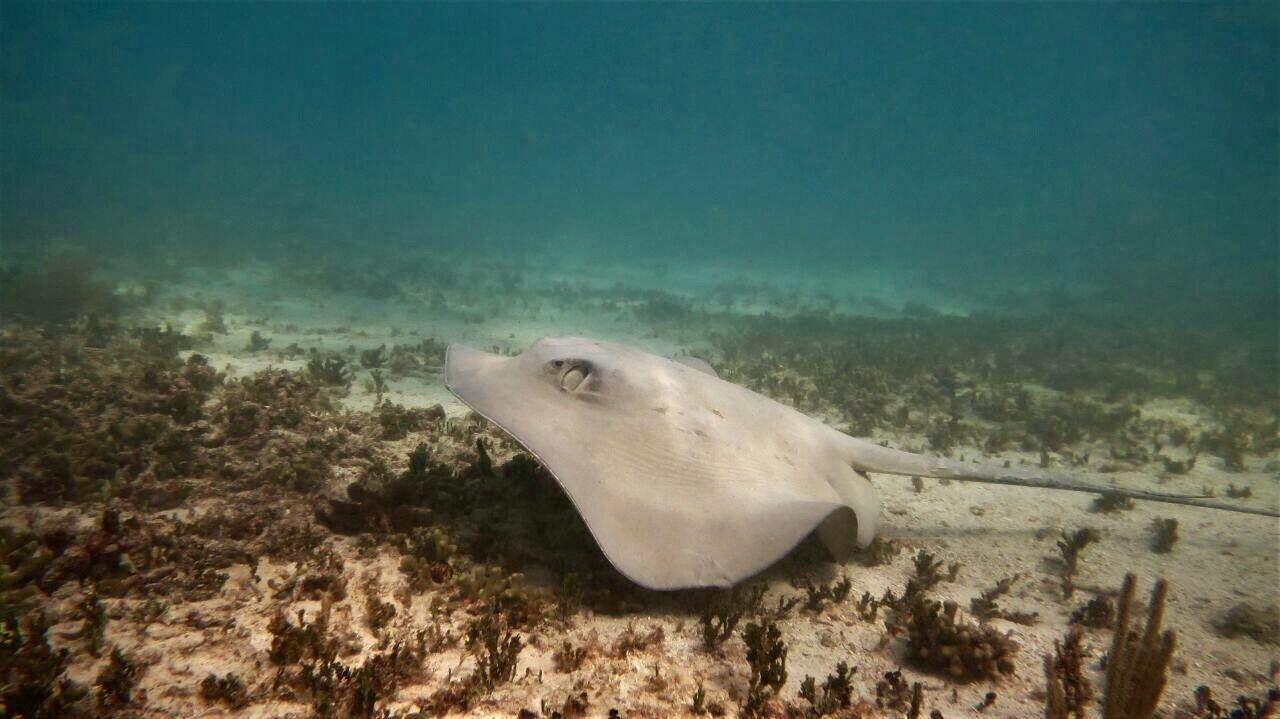Tulum Marine Life: What You’ll See While Diving or Snorkeling
Tulum isn’t just about stunning beaches and cenotes—it’s also home to an incredibly diverse underwater ecosystem. Whether you're diving the Mesoamerican Reef or snorkeling close to shore, you’ll encounter vibrant marine species that bring the Caribbean Sea to life. Here's a breakdown of the most common—and most exciting—marine animals you might meet.
Turtles
Hawksbill Turtle
Hawksbill turtles are easy to recognize with their sharp, curved beaks and colorful, patterned shells. You’ll often see them swimming around coral reefs in Tulum, where they help keep the reef healthy by eating sponges.
Fun Fact: Hawksbill turtles can eat sea sponges that are toxic to most animals!
Loggerhead Turtle
Loggerhead turtles have large heads and strong jaws, which they use to crush crabs and shellfish. They are less common than green turtles but can sometimes be spotted around deeper reefs.
Fun Fact: Loggerheads are named for their unusually large heads and powerful bite.
Green Sea Turtle
Green sea turtles are calm and gentle. You might spot them eating seagrass or slowly gliding near the reef. They're a peaceful part of the underwater world in the Riviera Maya.
Fun Fact: Green turtles get their name from the green color of their fat—not their shell—because they eat mostly plants.
Stingrays
Southern Stingray
Southern stingrays are one of the most common rays in Tulum. You’ll often spot them gliding over sandy bottoms or half-buried in the sand, using their flat bodies to stay hidden.
Fun Fact: They use their wings to stir up sand and find food like shrimp and crabs.
Caribbean Torpedo Ray
This ray looks smaller and rounder and is known for its ability to produce electric shocks to defend itself. Though not commonly seen, they are sometimes spotted resting under the sand.
Fun Fact: Despite their electric powers, torpedo rays are harmless if left alone.
Caribbean Whiptail Stingray
This large, round-bodied ray can grow quite big and has a long whip-like tail. It’s more shy than the southern stingray but sometimes seen near the reef or in sandy lagoons.
Fun Fact: The Caribbean whiptail stingray can reach up to 6 feet across!
Fish
Queen Angelfish
Known for its bold blue and yellow colors, this beauty is often seen near coral heads.
Fun Fact: They often swim in pairs and are known to be curious around divers
Make it stand out
Whatever it is, the way you tell your story online can make all the difference.
Make it stand out
Whatever it is, the way you tell your story online can make all the difference.
Make it stand out
Whatever it is, the way you tell your story online can make all the difference.











